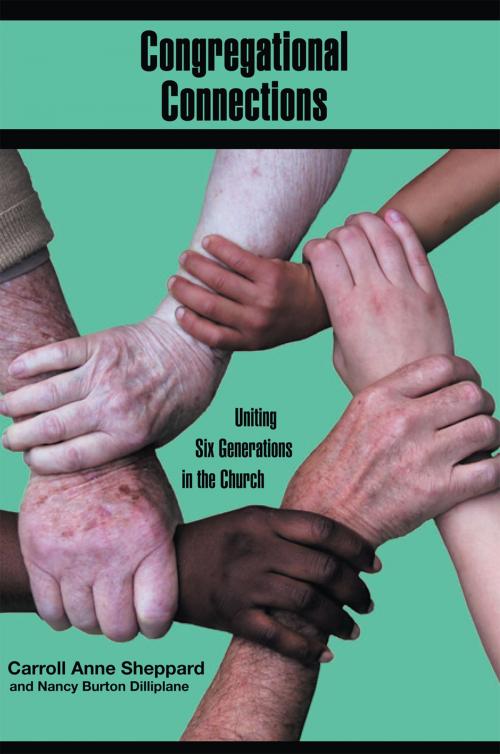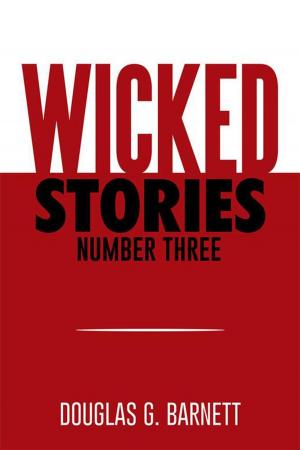| Author: | Carroll Anne Sheppard, Nancy Burton Dilliplane | ISBN: | 9781465344489 |
| Publisher: | Xlibris US | Publication: | September 15, 2011 |
| Imprint: | Xlibris US | Language: | English |
| Author: | Carroll Anne Sheppard, Nancy Burton Dilliplane |
| ISBN: | 9781465344489 |
| Publisher: | Xlibris US |
| Publication: | September 15, 2011 |
| Imprint: | Xlibris US |
| Language: | English |
Congregational Connections challenges both clergy and lay leaders to become deeply sensitized to the demographic reality of six separate generational cohorts being alive at once. This is the first time in the worlds history that such a thing has happened to humans, and none of us has the reality clear in our minds yet. It takes work to analyze consciously what we are seeing when multiple generations are present. We discover that we are quite happy when we see the expected three Elders, Parents raising kids, and the children themselves-- and we often fail to ask: Who isnt here? Demographers and marketers have created names for these six cohorts (a cohort is a group of people born within a 20 or 25 year span who have some distinctive characteristics). In America today we have Builders (approximately ages 110-87); Silents (86-68); Boomers (67- 51/48); GenXers (51/48 27); Millennials (27- 11) and GenZ (10 and under). The first three Builders, Silents and Boomers are referred to in Congregational Connections as Olders; and the second three (GenX, Millennials and GenZ) are referred to as Youngers. A great shift in worldview and preferred technologies separates Olders and Youngers. Today five of these cohorts (the youngest Builders, Silents, Boomers, GenX and the oldest Millennials) are playing adult roles in a world that recently seemed to be populated by Elders and Parents raising Children. It is making everyone grumpy. There does not seem to be psychological room for all these players. The March 2011 cover of Philadelphia Magazine pictured a generic texting device with the following text: Dear Baby Boomers, Just die already. (Well take Philly from here. Thanks) XOXO, Generation X In congregation after congregation, Olders are wondering why the Youngers dont seem to be attending worship regularly. Yet when they do come, the Olders wish they would make their children stop texting and the parents would stop checking their cell phones. Youngers are wondering why Olders want to have all these time-wasting repetitive meetings and wont use e-technologies to avoid them. And why arent they being respected? Congregational Connections offers a discussion of who these cohorts are, and why they act the way they do. Its nine chapters cover: How We Got Here; Six Different Cohort Experiences; The Generational Divide; Realities for Congregational Life; Worship; Christian Formation; Programs and Space; Community is Congregation, and The Way Forward: Hope. The books aim is not only to have readers become aware of the six cohorts and their different attitudes and needs, but also to offer insights through Congregational Moments (case studies) that let readers see how these realities play out in church life, and suggest questions for discussion. Why is it happening now? In her book, The Great Emergence, Phyllis Tickle offers us a thesis that we are in the middle of the next Reformation. These happen every five hundred years, and take about 150 years to roll their paradigm shift of technology and worldview through society. The last Reformation was fueled by printing technology that promoted widespread literacy and a worldview shift that supported increasing political democracy and social leveling. The one that we are living through now is about electronic technology (radio, phone, television, computers, internet, and who knows?) and an even flatter social environment. Those changes by themselves seem sufficient to make the Second Reformation happen. Yet added to their pressures is the arrival of six generational cohorts on the worlds playing field. Each cohort has its own identity, but Olders and Youngers break into two different sides of the game. Whats more, by the time the Second Reformation finishes rolling through, medical advances may add several decades to the average lifespan. Perhaps eight, nine or even more generational cohorts will be alive together at its end. Right now, congre
Congregational Connections challenges both clergy and lay leaders to become deeply sensitized to the demographic reality of six separate generational cohorts being alive at once. This is the first time in the worlds history that such a thing has happened to humans, and none of us has the reality clear in our minds yet. It takes work to analyze consciously what we are seeing when multiple generations are present. We discover that we are quite happy when we see the expected three Elders, Parents raising kids, and the children themselves-- and we often fail to ask: Who isnt here? Demographers and marketers have created names for these six cohorts (a cohort is a group of people born within a 20 or 25 year span who have some distinctive characteristics). In America today we have Builders (approximately ages 110-87); Silents (86-68); Boomers (67- 51/48); GenXers (51/48 27); Millennials (27- 11) and GenZ (10 and under). The first three Builders, Silents and Boomers are referred to in Congregational Connections as Olders; and the second three (GenX, Millennials and GenZ) are referred to as Youngers. A great shift in worldview and preferred technologies separates Olders and Youngers. Today five of these cohorts (the youngest Builders, Silents, Boomers, GenX and the oldest Millennials) are playing adult roles in a world that recently seemed to be populated by Elders and Parents raising Children. It is making everyone grumpy. There does not seem to be psychological room for all these players. The March 2011 cover of Philadelphia Magazine pictured a generic texting device with the following text: Dear Baby Boomers, Just die already. (Well take Philly from here. Thanks) XOXO, Generation X In congregation after congregation, Olders are wondering why the Youngers dont seem to be attending worship regularly. Yet when they do come, the Olders wish they would make their children stop texting and the parents would stop checking their cell phones. Youngers are wondering why Olders want to have all these time-wasting repetitive meetings and wont use e-technologies to avoid them. And why arent they being respected? Congregational Connections offers a discussion of who these cohorts are, and why they act the way they do. Its nine chapters cover: How We Got Here; Six Different Cohort Experiences; The Generational Divide; Realities for Congregational Life; Worship; Christian Formation; Programs and Space; Community is Congregation, and The Way Forward: Hope. The books aim is not only to have readers become aware of the six cohorts and their different attitudes and needs, but also to offer insights through Congregational Moments (case studies) that let readers see how these realities play out in church life, and suggest questions for discussion. Why is it happening now? In her book, The Great Emergence, Phyllis Tickle offers us a thesis that we are in the middle of the next Reformation. These happen every five hundred years, and take about 150 years to roll their paradigm shift of technology and worldview through society. The last Reformation was fueled by printing technology that promoted widespread literacy and a worldview shift that supported increasing political democracy and social leveling. The one that we are living through now is about electronic technology (radio, phone, television, computers, internet, and who knows?) and an even flatter social environment. Those changes by themselves seem sufficient to make the Second Reformation happen. Yet added to their pressures is the arrival of six generational cohorts on the worlds playing field. Each cohort has its own identity, but Olders and Youngers break into two different sides of the game. Whats more, by the time the Second Reformation finishes rolling through, medical advances may add several decades to the average lifespan. Perhaps eight, nine or even more generational cohorts will be alive together at its end. Right now, congre















